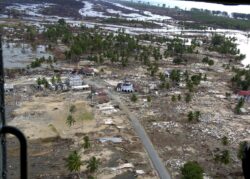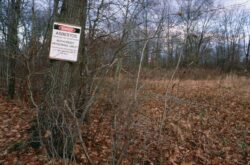Investigating Claims: How to Determine if You Have a Viable Class Action Lawsuit
This article provides a comprehensive guide to the complex process of environmental class action litigation, a tool increasingly employed to address widespread environmental harm. Through an exploration of the journey from initial discovery of potential harm to final trial - or settlement - the intricate procedural steps integral to these class actions are demystified.

Key stages such as evidence gathering, lawsuit filing, notifying affected parties, preliminary hearing preparation, pre-trial motion management, court proceedings, settlement exploration and understanding the appeal process are discussed in detail.
This article offers a valuable resource for practitioners, scholars, and stakeholders seeking a nuanced understanding of environmental class action litigation, enhancing their ability to navigate this complex legal landscape effectively and efficiently.
The insights provided here contribute to broader debates about the role of litigation in promoting environmental justice and sustainable development.
Key Takeaways
- Thorough investigation is crucial for identifying potential sources of harm and pollutants in environmental class action lawsuits.
- Gathering initial evidence through surveys, scientific testing, and expert testimonials establishes a strong foundation for the lawsuit.
- Filing the lawsuit requires strategic decision-making, experienced attorneys, and adequate financial resources.
- Communication with affected parties and community outreach are essential for notifying potentially impacted individuals and increasing the potential for a successful resolution and compensation.
Identifying the Potential Cause of Harm
Determining the potential cause of environmental harm is a critical initial step in the process of navigating an environmental class action lawsuit. This stage involves identifying the sources of harm, which may encompass a wide range of harmful pollutants. The process of harmful pollutants identification is complex and requires the expertise of environmental scientists and investigators. It involves a thorough examination of the environment in question, including the air, soil, and water, to detect any signs of contamination.
The presence of harmful substances such as heavy metals, chemical waste, or radioactive materials may point to industrial pollution as the cause of harm. In other instances, the cause may be linked to improper waste disposal, oil spills, or harmful agricultural practices. These potential causes are not mutually exclusive and a thorough investigation may reveal that multiple sources of pollution are at play. The identification of these pollutants is not only crucial for determining the cause of the environmental harm but also for establishing a link between the harm and the responsible parties.
Following the harmful pollutants identification, an environmental damage assessment is carried out. This includes quantifying the extent of the damage, evaluating the impact on the local ecosystem, and estimating the cost of remediation. This assessment aids in building a strong case for the class action lawsuit as it provides tangible evidence of the harm caused and the monetary value attached to it.
The process of pinpointing the cause of environmental harm and assessing the damage is a meticulous and scientific one. It lays the groundwork for the subsequent stages of the environmental class action lawsuit, setting the stage for pre-trial preparations and potentially, a courtroom showdown.
Gathering Initial Evidence
Collecting initial evidence is a crucial step that involves obtaining crucial data and information to substantiate the allegations made in a group litigation. This step is integral in establishing a strong foundation for the environmental class action lawsuit. It involves a detailed examination of the circumstances surrounding the environmental harm, including the examination of polluted areas, analysis of physical and biological effects, and documentation of violations, if any.
Evidence Collection Strategies play a significant role in this process. They may include surveys, interviews, scientific testing, and expert testimonials. Surveys and interviews often provide first-hand information from affected individuals about the nature and extent of the harm. Scientific testing can reveal the presence of pollutants or contaminants, and their potential harm to the environment and human health. Expert testimonials can interpret the gathered data and provide critical insights into the extent of environmental damage.
The Environmental Damage Assessment forms the core of the evidence collection process. This involves an in-depth study of the affected environment, often carried out by environmental experts. The assessment can reveal the degree of harm caused, the potential for recovery, and the cost of remediation. The results of this assessment can significantly influence the direction of the litigation, as they provide quantitative and qualitative information that could demonstrate the defendant's liability.
The process of gathering initial evidence is meticulous and requires a systematic approach. It not only helps in establishing the viability of the case but also in determining the strength of the claims. It is an essential prerequisite towards the successful navigation of the environmental class action process.
Filing the Lawsuit
Upon assembling substantial evidence, the next phase involves officially initiating the lawsuit, a critical juncture that infuses legal formality into the fight for environmental justice. The filing of the lawsuit is a crucial step in the environmental class action process, requiring meticulous planning and strategic decision-making.
This phase necessitates the involvement of proficient legal counsel, making legal representation selection a significant consideration. Choosing a legal representative is a fundamental decision that can significantly impact the case's trajectory. It is essential to select experienced attorneys well-versed in environmental law, class action suits, and the specific nuances of the case at hand. A skilled legal team can adeptly navigate the complexities of the litigation process, ensuring that the lawsuit is accurately drafted and filed according to legal protocols, strengthening the case's standing in court.
Just as crucial as having competent legal counsel is securing adequate financial resources to sustain the litigation process. Exploring lawsuit financing options is therefore paramount. Such funding can come from various sources, including contingency fee arrangements, legal aid, and third-party litigation financing. These resources can provide the necessary financial backing to cover legal costs, expert fees, and other expenses, ensuring the case can progress without financial hindrance.
The process of filing the lawsuit in an environmental class action suit is a complex, multifaceted task that demands careful planning, strategic decision-making, and adequate resources. The selection of a proficient legal team and the exploration of financing options are key factors that can significantly influence the case's success. This stage, while challenging, is a vital step in the pursuit of environmental justice, paving the way for the subsequent phases of the litigation process.
Notifying Affected Parties
After the lawsuit has been filed, the next crucial step in the pursuit of legal recourse involves informing all individuals potentially impacted by the environmental issue at hand. This notification process is crucial to ensuring that all parties who may have been harmed have an opportunity to join the action and claim their right to compensation. This is where community outreach and communication strategies come into play.
Community outreach is an essential aspect of this stage. It involves contacting the affected community, often through public meetings, social media, or direct mail, to inform them about the lawsuit and the potential impacts of the environmental harm. This outreach must be conducted in a manner that respects the community's culture, language, and communication preferences. It is also important to ensure that the information provided is clear, accurate, and accessible, so that all community members can understand their rights and the potential outcomes of the legal proceedings.
Communication strategies, on the other hand, can range from traditional methods, such as the distribution of flyers or use of local media outlets, to more modern techniques, such as social media campaigns or virtual town hall meetings. These strategies aim to ensure the broadest possible dissemination of information about the lawsuit and the opportunity to join the action.
The notification process serves as a bridge between the filing of an environmental class action lawsuit and the actual trial. It ensures that all affected parties are aware of the pending litigation and have the opportunity to join the action, thereby increasing the potential for a successful resolution and adequate compensation for the environmental harm caused.
Preparing for Preliminary Hearing
In preparation for the preliminary hearing, meticulous gathering and organization of facts, evidence, and legal arguments is pivotal to establishing the foundation of the case. The initial phase involves the careful selection of legal representation, a task that should not be taken lightly as this decision can significantly influence the trajectory of the class action suit. An experienced legal team with a deep understanding of environmental laws and class action proceedings is paramount to effectively navigate the complexities of these cases.
The legal representation selected will then proceed to comprehensively analyze the environmental harm alleged, gather compelling evidence, and devise compelling legal arguments. This requires a thorough understanding of the scientific aspects related to the alleged environmental harm and a deep knowledge of relevant legal precedents.
Preliminary hearing procedures are stringently followed to ensure fairness to all parties involved. These procedures provide a platform for both parties to present their initial arguments and evidence before a judge, who then makes determinations on whether the case should proceed to trial. During this stage, the plaintiff's legal team presents preliminary evidence to demonstrate that the class action suit has merit.
The critical importance of the preliminary hearing cannot be overstated. It is a significant juncture where the strength of the case is tested, and the plaintiff's legal team must convincingly demonstrate that the requirements for class certification are met. The preliminary hearing provides an opportunity to establish the validity of the claim, and a lack of convincing evidence or arguments can lead to a dismissal of the case. It is therefore incumbent upon the legal team to ensure that every aspect of the case is meticulously prepared and presented.
Conducting Depositions
Conducting depositions serves as a critical procedure in the pretrial stage of a lawsuit, offering an avenue for both parties to gather information from witnesses under oath, thereby contributing to the overall strength of their respective cases. Deposition strategies are pivotal in the environmental class action process, as they allow legal teams to gather critical information about the environmental damage, health impacts, and potential negligence involved.
Effective deposition strategies often involve meticulous preparation, thorough understanding of the case, and a well-thought-out line of questioning. It is essential to prepare the witness adequately, ensuring that they comprehend the gravity of their testimony and the potential consequences of their statements. Witness preparation can involve explaining the deposition process, briefing them on potential questions, and reviewing relevant documents. This intensive preparation helps witnesses provide accurate, consistent, and convincing testimonies that strengthen the case.
The deposition process also requires an astute understanding of the law and the ability to adapt to rapidly changing circumstances. Skilled legal practitioners can leverage the deposition to challenge opposing witnesses, identify weaknesses in the opposing party's case, and obtain admissions that can be crucial at trial.
While the deposition is a fact-finding tool, it is also an opportunity to observe the witness's demeanor and credibility, which can influence the jury's perception during the trial. Thus, effective deposition strategies and witness preparation are integral components of a successful environmental class action lawsuit, potentially influencing the lawsuit's trajectory and final outcome.
It is, therefore, crucial for legal teams to approach this stage with diligence, meticulous preparation, and strategic planning.
Managing Pre-Trial Motions
Managing pre-trial motions represents a vital phase in the litigation process, where parties can challenge the legal sufficiency of claims, seek to limit the issues for trial, or attempt to dismiss the case entirely based on procedural or substantive grounds. In environmental class action lawsuits, these motions often involve complex legal and scientific issues, requiring attorneys to employ sophisticated motion drafting techniques and strategic motion planning.
Motion Drafting Techniques play a crucial role in managing pre-trial motions. The drafting process requires meticulous attention to detail, a thorough understanding of the relevant statutes and case law, and a clear and persuasive writing style. The goal is to construct a compelling argument that the court should rule in favor of the moving party, based on the facts presented and the applicable law. To be effective, such motions must be concise, clearly articulate the legal basis for the request, and provide a detailed explanation of why the court should grant the relief sought.
Strategic Motion Planning is another critical aspect. It involves identifying the most advantageous time to file certain motions and determining how to structure the arguments to maximize the likelihood of success. This requires a deep understanding of the court's practices and preferences, the opposing counsel's likely responses, and the potential implications of various rulings on the overall litigation strategy.
In managing pre-trial motions, it is essential to integrate these techniques and strategies effectively. The potential impact on the trajectory of the case cannot be understated. It can shape the course of the trial, influence settlement negotiations, and ultimately determine the fate of the class action lawsuit.
Going to Court
Having navigated the complexities of managing pre-trial motions, it is essential to shift focus towards the actual trial process. This is a critical stage in the environmental class action process, requiring a thorough understanding of courtroom procedures and practices.
One of the crucial aspects to consider at this stage is courtroom etiquette. This involves a set of unwritten rules and formalities governing behavior in a courtroom. Understanding and abiding by these rules can have a significant impact on the perception and judgment of the jury and the judge. For instance, showing respect to all court officials, dressing appropriately, and speaking clearly and concisely can create a positive impression. Additionally, punctuality is a central element of courtroom etiquette, demonstrating respect for the court's time and the seriousness of the proceedings.
Another critical aspect of going to court is jury selection. This process, also known as voir dire, involves attorneys from both sides questioning potential jurors to determine their suitability for the case. The goal is to ensure an impartial jury that can fairly weigh the evidence and deliver a just verdict. In an environmental class action lawsuit, it is crucial to assess potential jurors' attitudes towards environmental issues, corporate conduct, and the law. It's also important to gauge their ability to comprehend complex scientific and technical evidence that could be central to the case.
Moving forward, it is clear that mastering courtroom etiquette and understanding the nuances of jury selection are pivotal for a successful trial. These aspects, coupled with effective trial strategies, can significantly influence the outcome of an environmental class action lawsuit.
Exploring Settlement Options
Exploring the realm of settlement options often becomes a strategic imperative, as it offers an alternative route to potentially resolve the legal dispute without proceeding to a full trial. Class action lawsuits, particularly those involving environmental concerns, are inherently complex, often involving multiple parties, multi-faceted legal issues, significant financial stakes, and public interest considerations. In these circumstances, exploring alternative dispute resolution (ADR) mechanisms such as mediation or arbitration can offer significant benefits.
ADR mechanisms are generally far less adversarial than litigation and can lead to more collaborative and mutually agreeable resolutions. Moreover, these processes can be significantly less resource-intensive, both in terms of time and financial investments, as compared to traditional trials. Furthermore, these mechanisms offer a level of confidentiality that court trials do not, which can be a critical factor in sensitive environmental cases.
Mediation, a popular form of ADR, allows the parties involved to negotiate a mutually satisfactory resolution under the guidance of a neutral third-party mediator. The benefits of mediation include its flexibility, confidentiality, and the preservation of relationships between parties. This can be particularly beneficial in environmental class actions, where the defendant is often a local industry or corporation that has ongoing relationships with the plaintiff community.
In the context of environmental class actions, exploring settlement options and ADR mechanisms can be a viable strategy. It allows for the opportunity to address the complex issues at hand in a more flexible, efficient, and potentially less contentious manner, thereby fostering resolution and rebuilding trust among the parties involved.
Understanding the Appeal Process
The appeal process, often perceived as a complex and convoluted aspect of the legal landscape, is a critical stage that affords parties the opportunity to challenge the validity of a court's decision. In the context of environmental class actions, this phase is particularly significant given the potential for far-reaching implications on both the environment and affected communities. Understanding the appeal process is thus paramount in navigating the intricacies of these legal proceedings.
Appeal strategies are instrumental in this phase, as they can significantly influence the trajectory of the case. Parties must be adept at identifying and articulating inconsistencies or errors in the initial trial, as these form the basis of the appeal. The complexity of the appeal process is further compounded by jurisdiction complexities, which can vary significantly across different regions. This necessitates a thorough understanding of the jurisdiction-specific rules and regulations that govern the appeal process.
Moreover, it is essential to recognize the time-sensitive nature of the appeal process. Timely filings and strict adherence to procedural rules can be the difference between a successful appeal and a dismissed case. The appeal process also necessitates a high degree of legal expertise, as the courts often require complex legal arguments and a deep understanding of precedent cases.
Navigating the appeal process in environmental class actions requires not only a strategic approach but also a comprehensive understanding of legal principles and jurisdiction complexities. This understanding can be instrumental in ensuring that the appeals process is successfully navigated, and that the best possible outcome is achieved for all parties involved.
Frequently Asked Questions
What is the typical duration of an environmental class action lawsuit from discovery to trial?
The duration of an environmental class action lawsuit, from discovery to trial, can significantly vary due to numerous factors.
Discovery challenges, including meticulous analysis of pertinent data and the coordination of expert testimonies, can contribute to extended timelines.
Additionally, the complexity of trial preparation, encompassing the collation of evidence and crafting of legal arguments, may further lengthen the process.
It is not uncommon for such lawsuits to span several years, reflecting the intricate nature of these proceedings.
How much does it typically cost to fund an environmental class action lawsuit?
The typical funding for an environmental class action lawsuit can vary greatly, largely dependent on the complexity of the case. Lawsuit financing can range from hundreds of thousands to millions of dollars.
These costs encompass lawyer fees, expert testimonies, and extensive research. Pro bono possibilities may exist, but are rare due to the high financial and time commitment required.
Therefore, strategic planning and thorough understanding of potential costs are imperative to navigate this intricate legal process.
How many environmental class action lawsuits are successful on average?
Quantifying the success rate of environmental class action lawsuits poses a significant challenge due to the varied nature of lawsuit challenges and diverse success factors involved.
However, research indicates that a significant number of these cases result in settlements rather than trials.
The determination of success hinges on several elements, including the strength of evidence, litigation strategy, and legal expertise involved.
It is, therefore, crucial to assess these factors when evaluating the potential success of an environmental class action lawsuit.
How are the funds from a successful lawsuit typically distributed among claimants?
In the aftermath of a successful lawsuit, funds allocation among claimants often follows a predetermined structure, detailed in the settlement agreement. However, settlement disputes can arise, necessitating the intervention of the court to ensure equitable distribution.
Factors influencing allocation may include the severity of harm suffered, legal fees, and the number of claimants. Thus, the process of funds distribution, while seemingly straightforward, can be complex and requires careful management to ensure fairness for all affected parties.
Are there specific laws or regulations that govern environmental class action lawsuits?
Yes, environmental class action lawsuits are governed by specific laws and regulations. These involve Environmental Regulations Interpretation, which provides statutory guidance on environmental issues.
Class Action Precedents also play a role in governing environmental class action lawsuits, as they set legal standards for these types of cases.
Compliance with these regulations is crucial in preparing for, and navigating through, the complex landscape of environmental class action lawsuits. Therefore, understanding these regulations is fundamental for effective legal representation in such cases.
Conclusion
In conclusion, the environmental class action process is a complex journey requiring meticulous preparation and execution.
From identifying the cause of harm and gathering initial evidence, to exploring settlement options and understanding the appeals process, each step necessitates a deep understanding of environmental laws.
With the growing importance of environmental protection, the role of these lawsuits in holding responsible parties accountable is paramount, further underlining the need to proficiently navigate this intricate process.

This post has been generated by AI and was not reviewed by editors. This is Not legal advice. Please consult with an attorney.




